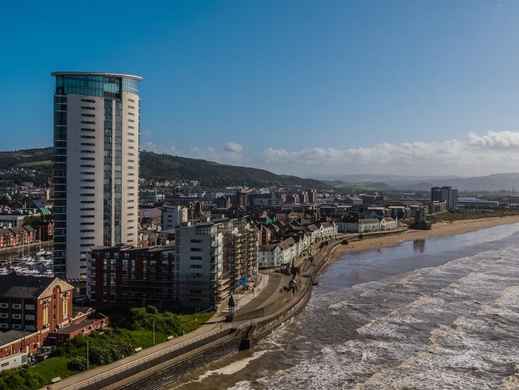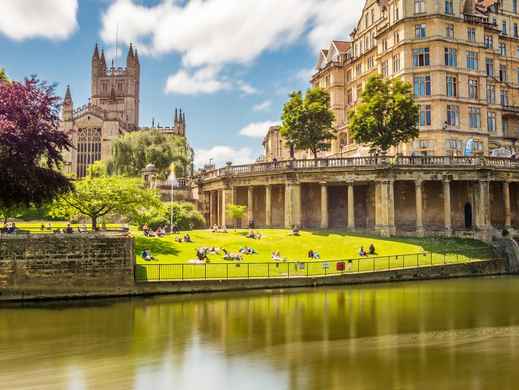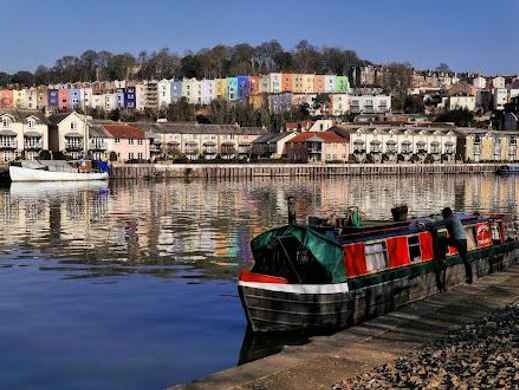


Pembrokeshire
Europe
/
United Kingdom
/
Pembrokeshire
"
Nestled along the southwestern coast of Wales, Pembrokeshire offers a breathtaking blend of rugged cliffs, pristine beaches, and rolling countryside. The climate here is typically mild but changeable, with Atlantic influences bringing refreshing sea breezes in summer and dramatic storms in winter. Pack layers and rainproof gear regardless of when you visit—the weather in Wales is famously unpredictable, but that's part of its charm.
The local culture in Pembrokeshire revolves around a deep connection to both land and sea. This is a bilingual region where you'll hear Welsh spoken alongside English, particularly in northern parts of the county. The pace of life here is refreshingly unhurried, with friendly locals who take pride in their heritage and natural surroundings. You'll find a vibrant arts scene, traditional music in pubs, and a growing emphasis on sustainable tourism that respects the region's exceptional environment.
What makes Pembrokeshire truly special is its dramatic coastline—the only coastal national park in the UK. The 186-mile Pembrokeshire Coast Path winds its way along towering cliffs, secluded coves, and sweeping beaches, offering some of Europe's most spectacular coastal walking. The quality of light here has attracted artists for generations, while the clean waters support diverse marine life from dolphins and porpoises to puffins and razorbills on offshore islands.
Food lovers should seek out fresh seafood caught daily in local harbors—particularly the famous Pembrokeshire crab and lobster. For a quintessential Welsh experience, try traditional cawl (a hearty lamb and vegetable soup), Welsh rarebit, or laverbread (seaweed paste, tastier than it sounds) spread on hot buttered toast. The region also boasts excellent local cheeses, craft beers from small breweries, and impressive farm-to-table restaurants championing Welsh produce.
Don't miss St. Davids, the UK's smallest city, home to a magnificent 12th-century cathedral built in a hollow to hide it from marauding Vikings. For adventure seekers, coasteering—a uniquely Welsh activity combining cliff jumping, rock scrambling, and sea swimming—was invented here and offers an exhilarating way to experience the coastline. And be sure to explore Pembroke Castle, an imposing medieval fortress and birthplace of Henry VII, the first Tudor king, which stands as a dramatic reminder of the region's historical significance in British history.
"
Travel Tips for Pembrokeshire
What you need to know before traveling here
Getting Around Pembrokeshire
A guide to Pembrokeshire's local transportation
Renting a car offers the most flexibility for exploring Pembrokeshire's scattered attractions and remote beaches. The county's narrow country lanes require confident driving, but the scenery more than compensates. Most major rental companies operate from Haverfordwest, the county's main town. Book ahead during summer months and be prepared for limited parking at popular coastal spots during peak season.
Practical Tips for Pembrokeshire
Things to prepare and best way to visit
Increasingly so. While traditional Welsh cuisine is meat-heavy, most restaurants now offer creative vegetarian options. St. Davids, Narberth, and Tenby have the best selection of places catering specifically to plant-based diets. Cafés like The Creative Common in Haverfordwest and Plum Vanilla in Narberth are known for excellent vegetarian food. Local farmers' markets are also great for fresh produce if self-catering.
Prioritize waterproof clothing and good walking shoes regardless of the season. Layers are essential as weather can change quickly, even in summer. If planning on swimming, a wetsuit is advisable for all but the warmest days. Binoculars for wildlife spotting, a reusable water bottle, and a small backpack for day trips are also recommended. Don't forget sunscreen—the UV can be deceptively strong when the sea reflects the light.
There are several ways to reach Pembrokeshire from Cardiff. One standard option is using ground transportation such as trains or buses. Trains are fast and convenient, while buses can be more affordable.
Coverage varies significantly across the county. Major towns like Tenby, Haverfordwest, and St. Davids have reasonable service, but expect limited or no signal along remote stretches of the coast path and in rural valleys. Download maps offline before heading out, and don't rely solely on your phone for navigation in remote areas. Most accommodations offer Wi-Fi, though speed may be slower than you're used to in cities.
Absolutely. Pembrokeshire is one of the safer parts of the UK with low crime rates and friendly locals happy to help visitors. The Coast Path attracts many solo walkers, and you'll find accommodations accustomed to single travelers. In summer, it's easy to meet people at hostels, on guided activities, or in pub beer gardens. Just take normal precautions when walking remote sections of the coast alone.
See All Practical Tips for Pembrokeshire

Travel Tips for Pembrokeshire
More Destination Near Pembrokeshire











 Facebook
Facebook Instagram
Instagram TikTok
TikTok Youtube
Youtube Telegram
Telegram
